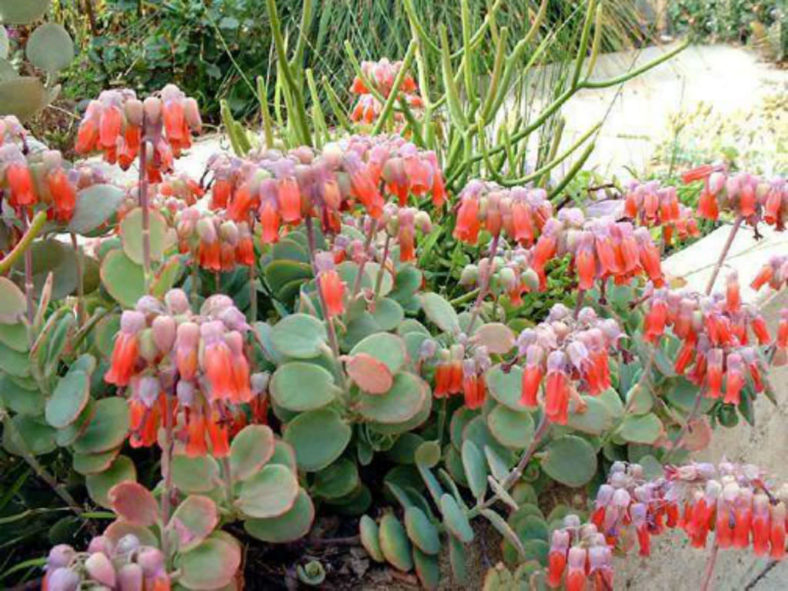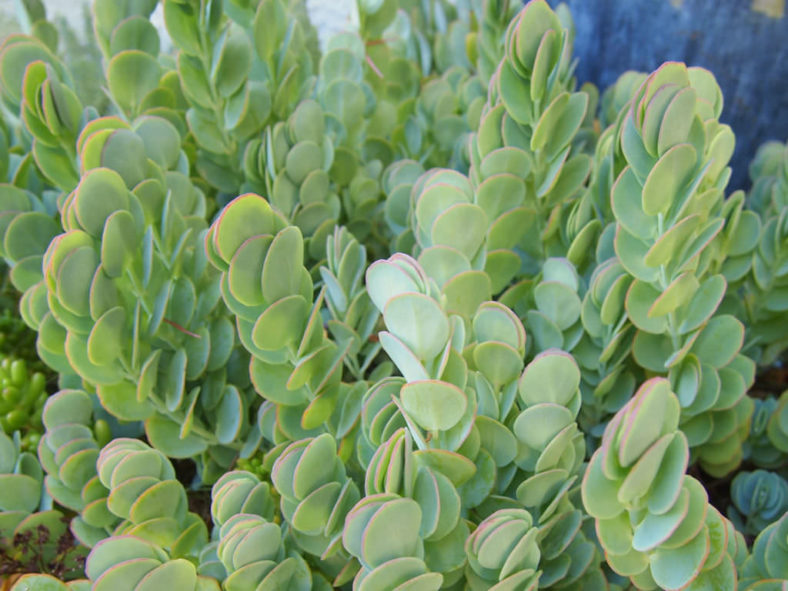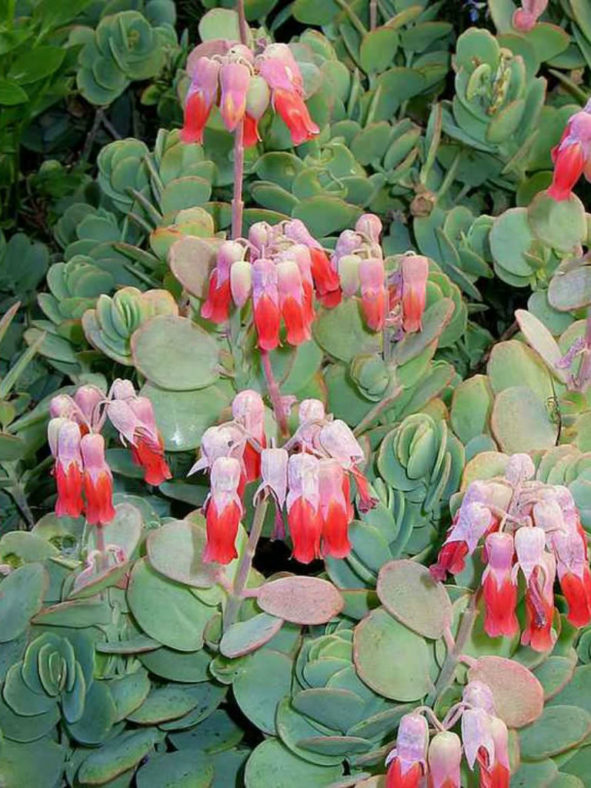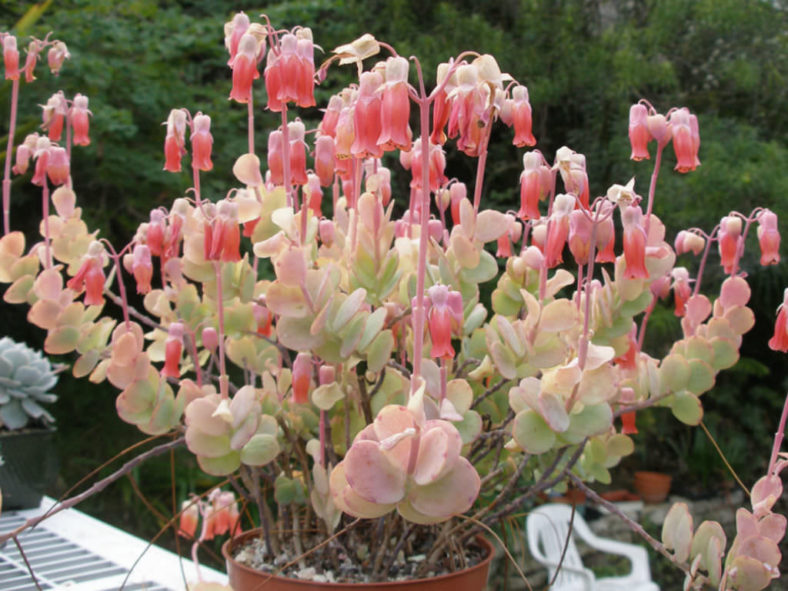Scientific Name
Kalanchoe marnieriana H. Jacobsen
Common Name(s)
Marnier's Kalanchoe
Synonym(s)
Bryophyllum marnierianum, Kalanchoe humbertii, Kalanchoe marnieriana
Scientific Classification
Family: Crassulaceae
Subfamily: Sedoideae
Tribe: Kalanchoeae
Genus: Kalanchoe
Etymology
The specific epithet "marnieriana" (pronounced "mar-nee-air-ee-AH-nuh") honors Julien Marnier-Lapostolle (1902-1976), a French botanical explorer, who created the Jardin botanique "Les Cèdres".
Origin
Kalanchoe marnieriana is native to south-eastern Madagascar. It grows in moist, rocky places.
Description
Kalanchoe marnieriana is a highly branched succulent with fleshy leaves arranged oppositely and often crowded near the tips of the slender branches. It can grow up to 12 inches (30 cm) tall, forming a tuft over time. The branches initially creep and root at the base and become ascending as they grow. The leaves are bluish-green with violet spots and covered with a powdery bloom. They are rounded, sometimes with a few crenations in the upper part and bulbils on the teeth, measuring up to 1.6 inches (4 cm) in length and 1.2 inches (3 cm) in width.
The flowers are orange to pink and can reach a length of 1.4 inches (3.5 cm). Throughout the year, they dangle off reddish stalks at the end of the branches. The flower stalks can grow up to 4.8 inches (12 cm) long.

How to Grow and Care for Kalanchoe marnieriana
Hardiness: USDA hardiness zones 9a to 11b: from 20°F (-6.7°C) to 50°F (10°C).
Kalanchoe care is minimal, but be cautious about light levels. Intense sunlight can burn the tips of the leaves. Place pots in partial sun to light shade areas when growing Kalanchoes.
The flowering varieties are highly rewarding for their colorful and long-lasting flowers. They prefer bright, sunny locations, especially in the growing season. Water moderately from fall to winter when the growth is most active. Reduce watering during the hottest summer months, when plants are mostly dormant, and during winter, when growth slows significantly. Let the soil surface dry out between waterings. Watch the fleshy leaves for signs of water distress. An ordinary potting soil mix is fine. Feed bi-weekly during the growing season with a liquid fertilizer, or use slow-release pellets.
These small plants require repotting every few years. When repotting, take extra care in handling, as the leaves are somewhat brittle and can snap easily. Clay pots work exceptionally well for planting Kalanchoes. Ensure pots can drain well and saucers can empty easily.
Learn more at How to Grow and Care for Kalanchoe.
Links
- Back to genus Kalanchoe
- Succupedia: Browse succulents by Scientific Name, Common Name, Genus, Family, USDA Hardiness Zone, Origin, or cacti by Genus
Photo Gallery
Click on a photo to see a larger version.


